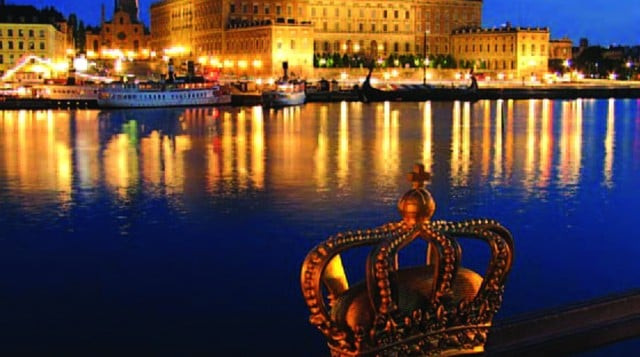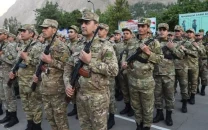Ball bearings: a pakistani’s view of sweden

I had got myself this close to the Arctic Circle on the strength of my dubious credentials as a columnist and was officially a Member of the Press invited by the Swedish Institute. My task was to cover the young men and women of their Young Leaders Visitor Program during their participation of the Rework the World Conference held in the Swedish heartland of Leksand during the first week of June.
The Rework the World Conference takes its title from a phrase employed by Manuel Castells, the first philosopher of the internet, to describe how new networks created by electronic media had the power to rework the world. The purpose of the conference was to get some 1,700 young environmental entrepreneurs from around the world into the same room as Big Business in the hope that venture capital could scale up these remarkable initiatives.
Our first task as the press invited by the Swedish Institute, was to attend the presentations prepared by the young leaders at the end of their training. And so we were subjected to several idealistic tableaus in which things like Twitter were supposed to help you choose the right major, or how Facebook could be retooled to suit the needs and demands of any number of social and political activists. With most of the young leaders coming from the MENA Region, the elephant in the room was very much the oppressive nature of many of their regimes and governments. It also raised an important question: what interest did the Government of Sweden have giving the Swedish Institute leeway to arm a bunch of bright and motivated Arabs and North Africans with the tools needed to fight a political campaign using social media? Gabriel Garcia Marquez may not have needed more than a prejudice to move the world, but give me a laptop and a Twitter account and let me show you what havoc can be created.
I asked an officer of the Swedish Institute what was up and received a we-don’t-mingle-in-other-people’s-politics type of reply. But she did admit some alumni of the Young Leaders Visitor Program had been questioned about their activities by the intelligence agencies of their governments. But regardless of where idealism and the internet may be able to take the Middle East, the presentations did get me thinking about the strategy of the Swedish Institute. Reaching out to the best and brightest and arming them with tools needed to fight a political campaign using social media is a bloody good idea.
Sweden, the land of Vikings, Ikea, Bjorn Borg, ABBA and the sauna, didn’t really coalesce into a nation until 1521, when King Gustav Vasa unified the many other tribes of hunter gatherers and races that had collected on the Baltic archipelago. A generation later, Sweden had broken with the Pope and by the end of that century, the country officially became Lutheran Christian. By this time, a hereditary monarchy had been introduced (it still continues, with the marriage of Crown Princess Victoria to her former gym trainer and “commoner” boyfriend taking place last month) and King Gustav had broken the back of the Hanseatic League, a collection of merchant-gangsters who ensured safe passage through the Baltic Sea at an appropriate cost. With the League’s monopoly over sea routes broken, money began to flow into Sweden’s coffers like never before and the country saw its golden era. Fast forward 500 years, and you’ve got Sweden, so to speak.
But money is not the only thing that creates great nations. By 1540, the Swedes were relying on the Riksdag, a collection of different social groups that were called upon to discuss and determine the affairs of the country. Under this system, the King shared power with this privy council of sorts and, over the last half-millenium, the Swedes have basically been polishing up one of the world’s earliest systems of democracy. Practice appears to perfect: The Economist Intelligence Unit actually rates Sweden’s democracy as the No. 1 democracy in the world.
What that means — and this is the thing about Sweden — is that it’s a country that has spent the last several hundred years grappling with the problems that young states like Pakistan haven’t come to terms with. So, for example, when it comes to women’s rights, Sweden is up there, having legislated on equal inheritance rights in the mid-1800s. It allowed female electoral franchise in 1921, declared rape in marriage a crime in 1965 and, in the past decade, has passed legislation on violence against women, corporal punishment and the sex trade. In many ways, Sweden is the land of problems solved. That’s not to say there’s no violence against women in Sweden, or that Swedish parents are totally immune from annoying children. It means that, when there is, there is at least a system you can rely on to get justice.
What they haven’t quite figured out, at least for now, is how to integrate native Swedes with immigrant Swedes.
We were taken to visit Quick Response, an NGO whose job it is to track down incidents of xenophobia in the press. That’s when newspaper reporters refer to minorities as “others” and when the sub-editor doesn’t have an eye for this type of stuff. Despite trying to reconcile the conflicting mental images of the name of the NGO and the type of work it did (do alarms go off when someone comes across an offending passage, do people come sliding down poles, do people wear capes etc.), I had to say, they had a point. It was brought home to the more sceptical of us through comparison between two types of reports on the same Muslim woman who lost her job as a school teacher because of her decision to wear a nikab. On the one hand, you had the stereotypical report of the school’s secularity and the woman’s lack of flexibility in approaching her religious beliefs. On the other, there was a question and answer that fleshed the woman’s character and, by revealing her dreams, aspirations, fears and desires, humanising her and her faith. Quick Response finds reporters guilty of the former and seminar and workshops them into the latter.
Later, we had some time off and took a tour of the city. Stockholm has to be one of the more intimidatingly picture-perfect cities in the world. In many ways, it’s like a rich friend’s house: the furniture is so expensive that one worries about letting their hair down lest something gets broken. The larger metropolitan area has less than 2 million residents, the city centre is small and everything’s easily walking distance. There’s an underground and efficient bus service. The city’s cycle friendly and, in all, there’s hardly any automobile traffic.
During our tour, we were informed that Swedes had invented things as common as the zipper, the three-point seat belt and ball-bearings. Ball-bearings seem to me a perfectly apt metaphor of what Sweden and Swedish people are like. Strong willed, efficient and not meant to be noticeable. We were shown a square where, in 1520, in an incident more or less similar to the Ahmadi massacres, King Kristian II (“the Tyrant”), executed 100 people. Another neighbourhood, we were told, built sometime in the Fourteenth Century, was built to house the elite, subsequently became a slum and then a commercial zone and is now, once again, gentrified. It takes nothing less than centuries of struggle, often violent, to forge the identity of modern Stockholm. A city doesn’t get to be so beautiful unless it’s paid
its dues.
Published in The Express Tribune, July 11th, 2010.

















COMMENTS
Comments are moderated and generally will be posted if they are on-topic and not abusive.
For more information, please see our Comments FAQ